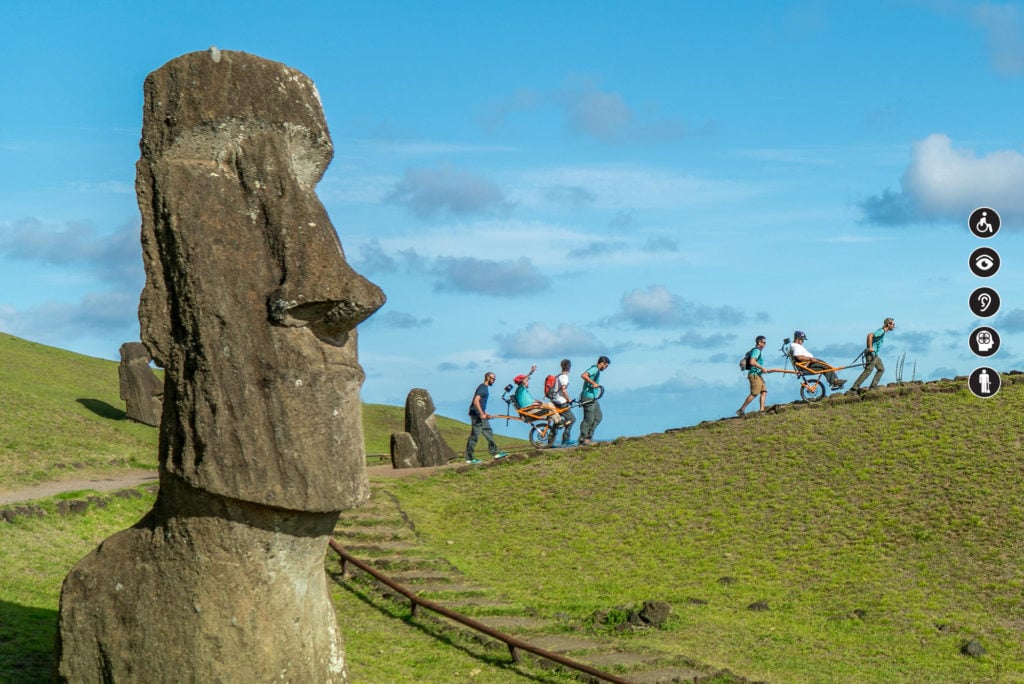Art World
The Civilization on Easter Island May Have Collapsed a Lot Later Than Previously Believed, a New Study Says
A new study shows that Easter Island society was still going strong when the first Europeans arrived.
A new study shows that Easter Island society was still going strong when the first Europeans arrived.
Sarah Cascone

Archaeologists have long assumed that the ancient society that erected the colossal Moai figures on Chile’s Rapa Nui, better known as Easter Island, collapsed many centuries ago. Now, a new study indicates that the islanders’ civilization was still going strong when Europeans arrived in 1722.
The island was settled in the 13th century by Polynesians, and is known for the famed Easter Island “heads” (many of the bodies have been buried by erosion over the centuries).
The research, which appears in the Journal of Archaeological Science, contests the accepted timeline that the Easter Island society was already in decline by the year 1600 and its massive stone statues left to fall into disrepair.
Conducting radiocarbon dating on 11 sites on Easter Island, the authors determined the timeline of each monument’s construction. Their findings indicate that Easter Islanders were still actively building new Moai figures, and maintaining existing ones, up until at least 1750.

Trekking at Rano Raraku Volcano on Easter Island. Photo courtesy of Wheel the World.
Further supporting these results are historical documents from the island’s first European visitors. Written accounts from the Dutch explorers who arrived in 1722 found that the monuments were in active ritual use, with no signs of decline, and the same goes for the Spaniards who landed in 1770. It was only in 1774 that James Cook found the giant statues in ruins and the figures knocked over.
“The way we interpret our results and this sequence of historical accounts is that the notion of a pre-European collapse of monument construction is no longer supported,” lead author Robert DiNapoli told Archaeology & Arts.
“Once Europeans arrive on the island, there are many documented tragic events due to disease, murder, slave raiding and other conflicts,” added co-author Carl Lipo. “The degree to which [the Rapa Nui people’s] cultural heritage was passed on—and is still present today through language, arts, and cultural practices—is quite notable and impressive. I think this degree of resilience has been overlooked due to the collapse narrative and deserves recognition.”